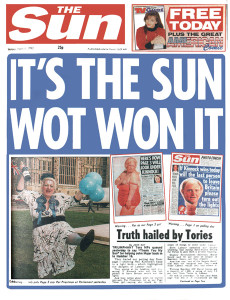You’d have thought News International would have learned after the phonehacking scandal, but a new problem has come about, following the accusation from the 17-year-old girl who started #milifandom that The Sun and Rupert Murdoch is bullying her.
The girl, who has only identified herself as Abby, is too young for the electoral roll and had not disclosed her location when The Sun turned up on both her doorstep and that of her 70-year-old grandmother.
Understandably, she’s a bit miffed.
What I remember
Over a decade ago, I was working for a newspaper organisation on a freelance basis and was trying to track down relatives of some of the contestants of a reality TV show.
This was pre-Facebook and Twitter (and much other social media), so the online resources were nowhere as good back then.
However, one thing we had access to was a database of UK addresses and their inhabitants. You could basically put any name in and it would spit out all the addresses that contained someone of that name.
It showed all the residents of each address and how long they’d been registered there (including minors), regardless of their electoral roll status (I don’t know how).
No telephone numbers, though. For that, we started off by going to 192.com and putting in the specific address we’d identified. More often that not, we found what we were looking for.
However, I remember an instance when I couldn’t get hold of the details I was desperately searching for. Fortunately, there were other methods.
A full-time colleague handed me a telephone number and told me ‘not to shout about it’, but just call with the name and address details.
Sure enough, the bloke who answered did a bit of tapping on his keyboard and came up with the number.
In fact, I’d managed to write down the wrong number of the house on the piece of paper I was using, but he calmly said: “Are you sure you mean No.15? There’s someone at No.18 with that surname, not No.15.”
I got a landline and a mobile number and it cost around £100 (although I wasn’t paying out my own pocket, of course).
This was over 10 years ago, so I can’t believe for a second that things aren’t more sophisticated now.
 It won’t have escaped anyone’s notice in the UK that there is a General Election about to happen. There has been coverage almost everywhere on all possible media channels.
It won’t have escaped anyone’s notice in the UK that there is a General Election about to happen. There has been coverage almost everywhere on all possible media channels.